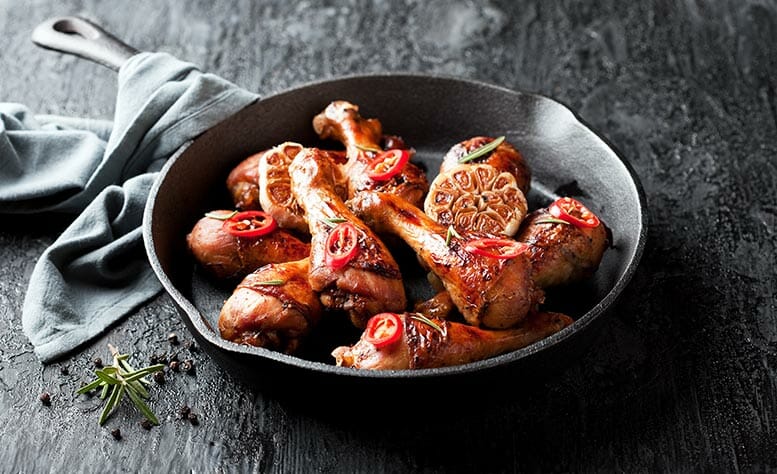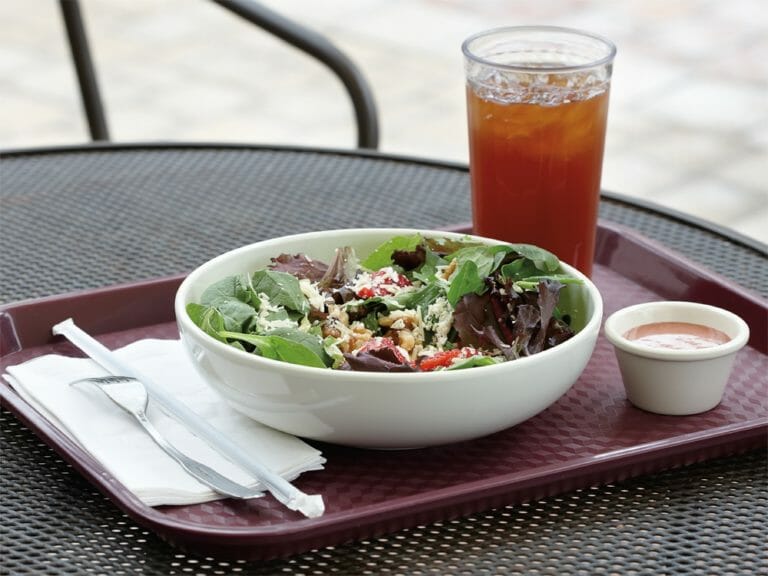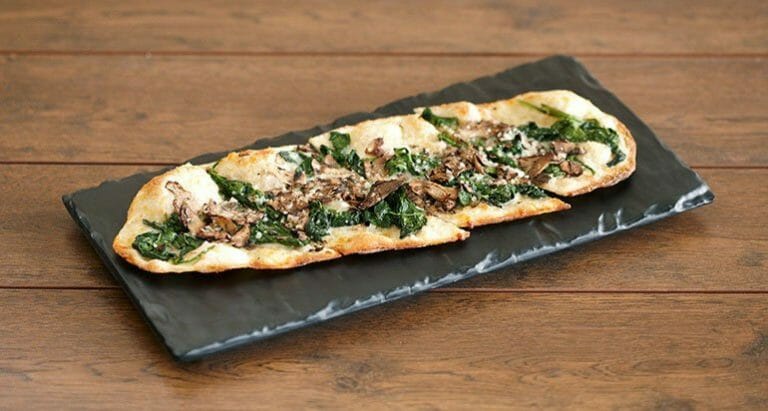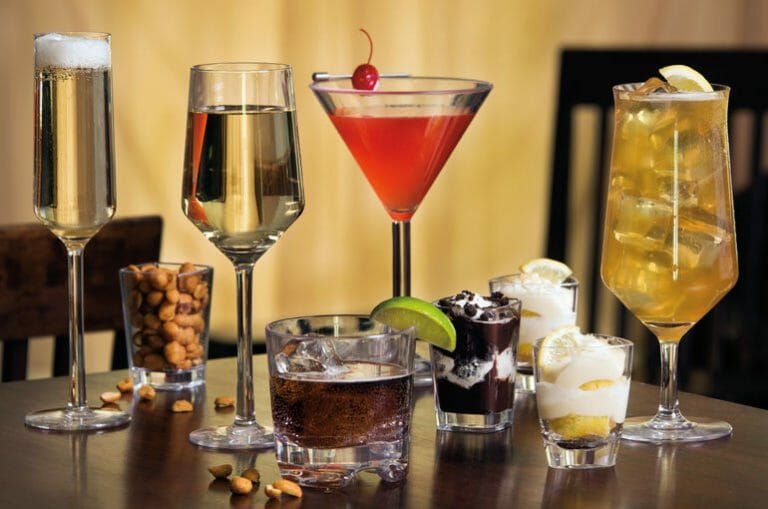Cast Iron: Natural vs. Coated for Foodservice Applications
When you think of cast iron, you may imagine antique potbelly stoves or cooking by the campfire. Cast iron is a wonderful metal for cooking, as evidenced by its centuries of use. It’s just as effective today, but it isn’t quite as versatile as stainless steel and aluminum – the two most common foodservice metals.
Cast iron comes in two configurations: natural, also referred to as uncoated, and enamel- or porcelain-coated. Both options create excellent cooking implements, and they both look fantastic. In fact, cast iron’s elegant look has aided in the growing interest in using it to cook and serve.
Keep up with the cast iron trend by learning about the differences between natural and coated cast iron for foodservice applications, but know that it comes with its challenges for ease of use in kitchens and foodservice operations.
Natural
All cast iron, whether natural or coated, has a much higher carbon concentration than other popular food-safe metals like stainless steel and aluminum. This means that natural cast iron is more susceptible to corrosion because when carbon combines with oxygen and water, rust forms. As formidable as rust may be for food service, you can manage this quality of cast iron by seasoning your pots and pans.

Seasoning cast iron cookware is easy, but requires regular maintenance. All you have to do is coat the cooking surface in oil, cook it off at about 400-500 degrees, and repeat a few times. The cooked-in oil helps create a physical barrier to oxygen, which removes one of the three elements necessary for rust to form: carbon + oxygen + water = rust. During the course of regular use, your seasoning will wear down for a few reasons discussed below, which just means that you have to occasionally re-season your cast iron.
In a commercial kitchen environment, cast iron will get cleaned in the dishwasher. This causes the oil barrier to eventually wear down. But again, with regular seasoning of your cast iron cookware, you can keep corrosion at bay. Overall, it’s important to note that natural cast iron requires more maintenance than aluminum or stainless steel.
Cast iron cookware can withstand acidic foods as long as it’s well seasoned. Unlike its stainless or aluminum counterparts, acidic foods can wear down natural, unseasoned cast iron. If you do cook acidic foods in cast iron, like a tomato sauce or something citrusy, it’s a good idea to re-season before you use your cookware again.
Most restaurants use natural cast iron in two places: serving sizzling entres like fajitas in the front of the house, or to sear, blacken, fry, or bake in the back of the house. Because cast iron can withstand higher heat than aluminum or stainless, it’s great for serving or cooking items that require high heat for short or extended periods of time.
Coated Cast Iron
As you can imagine, coating cast iron with enamel or ceramic changes some of its properties.
For example, enamel and ceramic coating keeps oxygen from coming into contact with the cast iron beneath it. This means coated cast iron doesn’t need to be seasoned like the natural version does. That’s good news for foodservice applications because it cuts down on care and maintenance time. However, enamel and porcelain can chip over time, exposing the cast iron and increasing the potential for rust. If you notice chipping, it’s probably time to retire that cooking vessel because you don’t want to get chips of enamel or porcelain in your guests’ food.

Coated cast iron has better non-stick qualities than natural, but it’s not a 100% non-stick surface.
Most coated cast iron tableware or cookware is two-toned with white enamel or porcelain on the inside, and another color on the outside. This is a great look for open kitchens, and lends itself well to operations with urban industrial, modern, or vintage provincial dcor themes. More so than natural cast iron, coated cast iron is more frequently being used to cook and serve. Not only can operators get a great look for their tabletop this way, they can cut down on the amount of dinnerware needed for service.
Smaller coated cast iron dishes are also fun because you can use them for several different levels of dining. You could serve macaroni and cheese in a small, coated cast iron pot and position your brand as casual and rustic. Or you could use the same vessel to nestle seared sea scallops on risotto in a more high-end environment. It’s a versatile look in addition to being effective cookware.
Some Things to Keep in Mind Regarding Cast Iron Usage in Foodservice
One thing to watch out for regarding larger cookware implements like Dutch ovens – made from both kinds of cast iron – is weight. It’s naturally a very heavy material, so you don’t want to use it in an environment where it would need to be moved around a lot. If you use cast iron on an induction range (glass cooktops), take care to ensure your cookware’s weight is distributed evenly. Sometimes the weight is enough to crack the glass.
A restriction of natural cast iron in foodservice, according to the FDA, is that it can only be used during a cooking process. Utensils or other food-contact surfaces made of cast iron can only be used if they’re part of âan uninterrupted process from cooking through service,â says the FDA. This is because cast iron is very porous, which means that food particles can get into the metal and create unsanitary conditions. However, if it’s used as part of the cooking process, that means any food in the cast iron would reach the temperature safety zone and would not pose a food safety threat.
Depending on the brand, quality, source, and style, cast iron may be less expensive than stainless steel or aluminum. It generally can outlast both metals in terms of service life as well. However, its use cases are limited and it requires more maintenance to uphold food safety standards. You’ll want to consider these attributes if you’re thinking of adding cast iron tableware or cookware to your commercial kitchen.
We hope this is helpful in breaking down the different types of cast iron available on the market today. If you’d like to learn more about stainless steel, the most popular food-safe metal, we recommend reading “Grades of Stainless Steel & What They Mean for Your Foodservice Opeartion.” Happy reading, cooking, and serving!
{{cta(‘b328eb8c-da26-4c29-b25d-21311cb4c664’)}}








